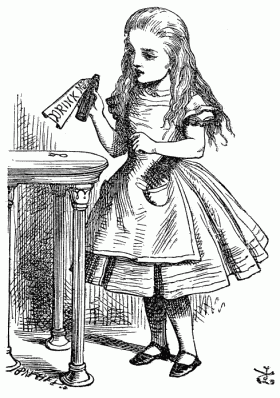 WIRED, the bible of the technorati, in a feature by one of journalism’s most consistently fascinating writers, Steve Silberman, reports a supremely interesting phenomenon.
WIRED, the bible of the technorati, in a feature by one of journalism’s most consistently fascinating writers, Steve Silberman, reports a supremely interesting phenomenon.
Placebos, those inactive little sugar pills with no biological effect, may have doubled in curative power over the past decade or so.
Driving pharmaceutical manufacturers, who routinely spend $100 million or more on proving to the FDA that their new drugs are safe and effective
– more effective than placebos –
into a justifiable panic.
Silberman reports:
Two comprehensive analyses of antidepressant trials have uncovered a dramatic increase in placebo response since the 1980s. One estimated that the so-called effect size (a measure of statistical significance) in placebo groups had nearly doubled over that time.
It’s not that the old meds are getting weaker, drug developers say. It’s as if the placebo effect is somehow getting stronger.
The fact that an increasing number of medications are unable to beat sugar pills has thrown the industry into crisis. The stakes could hardly be higher. In today’s economy, the fate of a long-established company can hang on the outcome of a handful of tests.
Why are inert pills suddenly overwhelming promising new drugs and established medicines alike? The reasons are only just beginning to be understood. A network of independent researchers is doggedly uncovering the inner workings—and potential therapeutic applications—of the placebo effect. At the same time, drugmakers are realizing they need to fully understand the mechanisms behind it so they can design trials that differentiate more clearly between the beneficial effects of their products and the body’s innate ability to heal itself. A special task force of the Foundation for the National Institutes of Health is seeking to stem the crisis by quietly undertaking one of the most ambitious data-sharing efforts in the history of the drug industry. After decades in the jungles of fringe science, the placebo effect has become the elephant in the boardroom.
The roots of the placebo problem can be traced to a lie told by an Army nurse during World War II as Allied forces stormed the beaches of southern Italy. The nurse was assisting an anesthetist named Henry Beecher, who was tending to US troops under heavy German bombardment. When the morphine supply ran low, the nurse assured a wounded soldier that he was getting a shot of potent painkiller, though her syringe contained only salt water. Amazingly, the bogus injection relieved the soldier’s agony and prevented the onset of shock.
***
Part of the problem was that response to placebo was considered a psychological trait related to neurosis and gullibility rather than a physiological phenomenon that could be scrutinized in the lab and manipulated for therapeutic benefit. But then Benedetti came across a study, done years earlier, that suggested the placebo effect had a neurological foundation. ***
Now, after 15 years of experimentation, he has succeeded in mapping many of the biochemical reactions responsible for the placebo effect, uncovering a broad repertoire of self-healing responses. Placebo-activated opioids, for example, not only relieve pain; they also modulate heart rate and respiration. The neurotransmitter dopamine, when released by placebo treatment, helps improve motor function in Parkinson’s patients. Mechanisms like these can elevate mood, sharpen cognitive ability, alleviate digestive disorders, relieve insomnia, and limit the secretion of stress-related hormones like insulin and cortisol.
***
[O]ne way that placebo aids recovery is by hacking the mind’s ability to predict the future. We are constantly parsing the reactions of those around us—such as the tone a doctor uses to deliver a diagnosis—to generate more-accurate estimations of our fate. One of the most powerful placebogenic triggers is watching someone else experience the benefits of an alleged drug. Researchers call these social aspects of medicine the therapeutic ritual.
In a study last year, Harvard Medical School researcher Ted Kaptchuk devised a clever strategy for testing his volunteers’ response to varying levels of therapeutic ritual. The study focused on irritable bowel syndrome, a painful disorder that costs more than $40 billion a year worldwide to treat. First the volunteers were placed randomly in one of three groups. One group was simply put on a waiting list; researchers know that some patients get better just because they sign up for a trial. Another group received placebo treatment from a clinician who declined to engage in small talk. Volunteers in the third group got the same sham treatment from a clinician who asked them questions about symptoms, outlined the causes of IBS, and displayed optimism about their condition.
Not surprisingly, the health of those in the third group improved most. In fact, just by participating in the trial, volunteers in this high-interaction group got as much relief as did people taking the two leading prescription drugs for IBS. And the benefits of their bogus treatment persisted for weeks afterward, contrary to the belief—widespread in the pharmaceutical industry—that the placebo response is short-lived.
The power of the therapeutic ritual?
Hypnosis?

 The Summer Night Sky and Constellations,
The Summer Night Sky and Constellations,
Hypnosis is a safe treatment for children…
Hypnosis Is a Safe Treatment for Children : Internal Medicine News